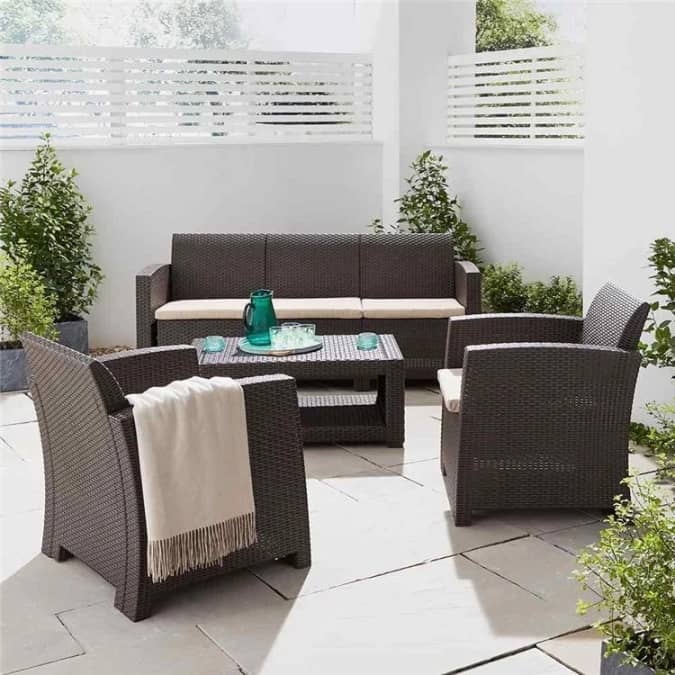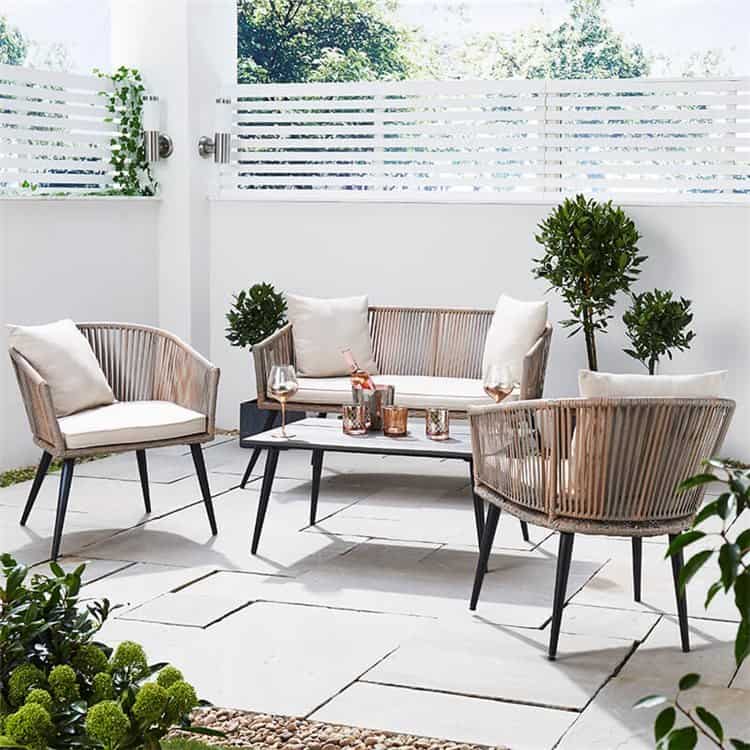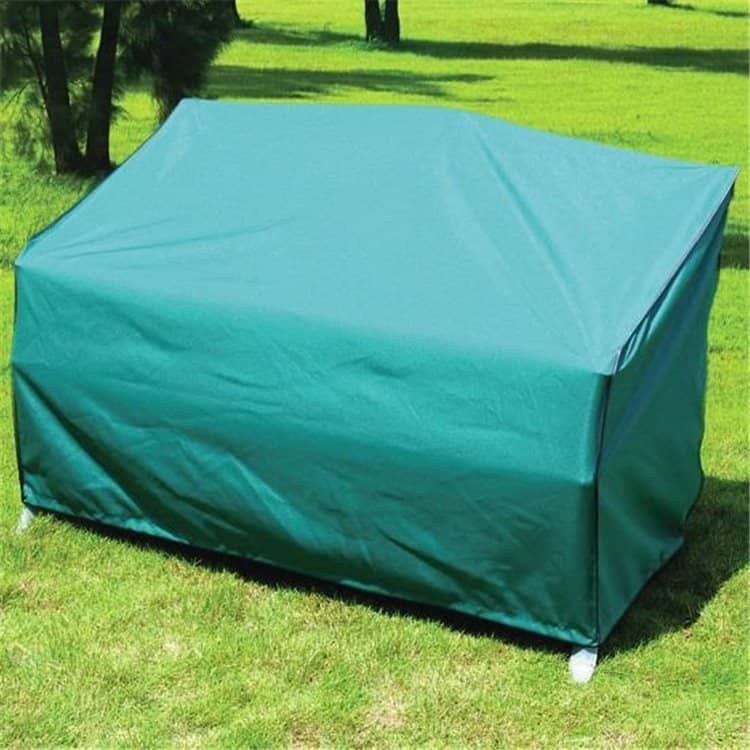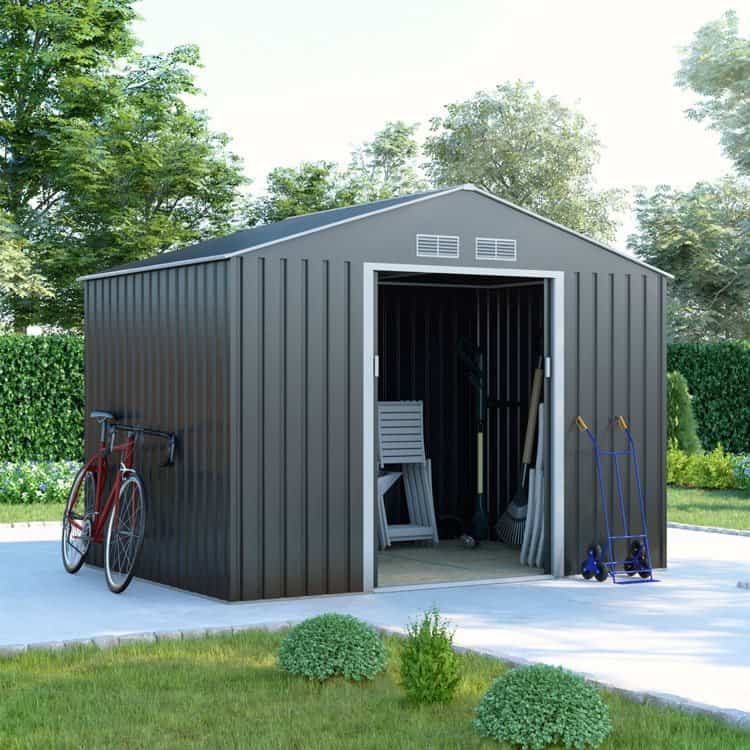Jump to:
To ensure the longevity of rattan furniture and preserve its charm, protection is a must. So we prepared some practical tips to help you safeguard your investment. Keep reading!
Rattan Garden Furniture

Rattan is a natural material derived from the tropical vine of the palm family. It possesses unique characteristics that make it a favoured choice for furniture. For one, its natural strength allows for intricate designs and weaving techniques.
Moreover, rattan furniture offers several benefits, such as being:
- lightweight
- eco-friendly
- easy to maintain
It exudes a warm and inviting ambience, making it ideal for indoor and outdoor settings. Rattan’s natural fibres provide excellent ventilation, ensuring comfort even during warmer seasons.
While rattan furniture boasts numerous advantages, it is vulnerable to environmental factors. Sunlight exposure can lead to fading and discolouration. Additionally, high humidity levels can cause mould and mildew growth. Temperature fluctuations can cause rattan to expand, contract, and even warp. To preserve the integrity of rattan furniture, protective measures are necessary.
Sunlight Protection

Direct sunlight can have detrimental effects on rattan furniture, be it natural or synthetic. Prolonged exposure can cause fading and discolouration of the furniture’s surface. This results in diminishing its original vibrancy and appeal. Additionally, the UV rays present in sunlight can weaken the fibres of rattan. This makes it more prone to damage and breakage over time.
To minimise sun exposure, position rattan furniture away from areas with direct sunlight. Use curtains or shades to help block out the intense sunlight and protect the furniture on the patio. These measures shield the furniture from harmful UV rays and reduce heat exposure. In turn, the material is less likely to dry or warp.
For added protection, consider using UV-protective sprays or coatings. These products create a barrier against UV rays. Applying them at regular intervals can maintain the visual allure of rattan furniture.
Shield From Humidity and Moisture
Rattan furniture is susceptible to the adverse effects of excess humidity. If left overlooked, this can result in the growth of mould, mildew, and even rot.
To combat high humidity, consider using dehumidifiers or moisture-absorbing products. These devices help regulate the moisture levels in the air where the furniture is placed.
Proper ventilation and air circulation are also crucial. Ensure that the space is well-ventilated, allowing for the free flow of air. Avoid areas with poor airflow or high moisture content, such as basements.
Avoiding Temperature Fluctuations
Temperature fluctuations can cause rattan to expand, contract, and even warp over time. When exposed to high temperatures, the furniture expands. Conversely, it contracts in colder temperatures. These continuous changes in size and shape can lead to structural instability. Eventually, they can compromise the overall integrity of the outdoor piece.
To protect rattan furniture from such issues, aim to maintain stable indoor temperatures. This is especially important in rooms where the furniture is located. Avoid placing them near radiators or air conditioning vents.
Using humidifiers or air conditioning can help prevent drastic fluctuations. This can reduce the stress on rattan furniture caused by temperature changes.
Applying Protective Coatings and Finishes
Protective coatings and finishes act as a barrier, shielding the rattan from:
- sunlight
- humidity
- general wear and tear
They also enhance the furniture’s resistance to stains, scratches, and water damage. There are various types available, including varnishes, sealants, and lacquers. Varnishes provide a clear protective layer, highlighting the natural beauty of rattan. Sealants offer a durable and waterproof finish, ideal for outdoor use. Lacquers provide a glossy and hard-wearing coating.
To apply these coatings effectively, follow these step-by-step instructions:
- Clean the rattan furniture thoroughly, removing any dust or debris.
- Sand the surface lightly to create a smooth and even base.
- Apply the chosen coating using a brush, following the manufacturer’s instructions.
- Ensure even coverage, paying attention to intricate details and hard-to-reach areas.
- Allow the coating to dry completely before applying additional layers if necessary.
- Repeat the process for multiple coats if desired. Make sure proper drying time between each layer.
Using Covers and Cushions

Covers and cushions help protect rattan furniture from daily wear and tear. Both act as a shield, safeguarding the furniture from dust, spills, and scratches.
When selecting furniture covers, opt for high-quality options made from durable, weather-resistant materials. Look for covers specifically designed for rattan furniture, ensuring they provide adequate protection. These covers should fit securely and be easy to put on and remove.
In addition, choose cushions with removable and washable covers. Regularly cleaning the cushions helps prevent dirt buildup and extends their lifespan. This routine ensures they stay fresh and comfortable for longer.
Regular Maintenance and Care of Rattan Furniture
Regularly clean rattan furniture using a soft brush or cloth to remove dust and debris. Ideally, use mild soapy water for tougher stains. Inspect the furniture regularly for any signs of damage, such as loose weaves. Address repairs promptly to prevent further deterioration.
Avoid placing excessive weight or applying excessive pressure on rattan furniture. Otherwise, this can lead to warping or breakage.
How about during the off-season or when not in use? Store rattan furniture indoors or in a dry, well-ventilated area, such as in a garden shed.

By following these maintenance tips, your rattan furniture will remain in optimal condition.
Round-up
Protecting rattan furniture is essential for preserving its beauty and ensuring its longevity. By taking these simple yet effective steps, you can enjoy their timeless allure for years!





